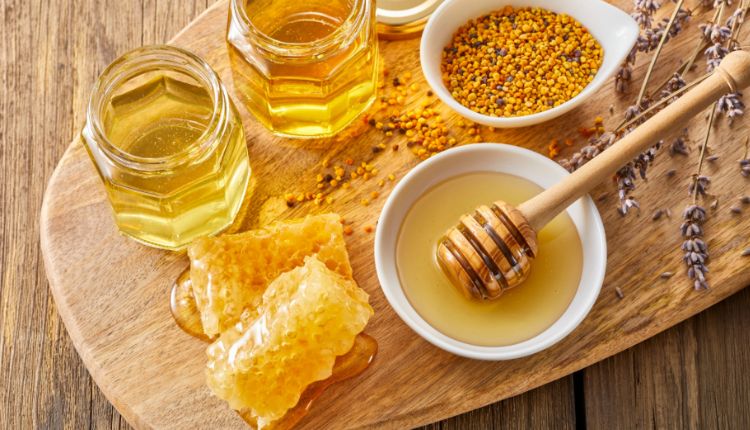Most people grab the first honey jar they see at the grocery store, but here’s what might shock you: that golden liquid has likely been stripped of nearly everything that makes honey beneficial. We’re talking about a product that’s been heated, filtered, and processed to the point where it barely resembles what bees actually create.
Understanding the real differences between raw and processed honey isn’t just about taste, it’s about getting what you’re actually paying for and the health benefits you deserve.
The Complete Processing Journey: Raw Honey vs Regular Honey
The path from hive to jar tells the entire story about why these two products couldn’t be more different. While both start from the same source, their journeys diverge dramatically.
What Natural Raw Honey Actually Is
Natural raw honey represents honey in its most authentic state, exactly as bees intended it. Raw honey is a rich source of antioxidants, which can help to protect the body against free radical damage . The extraction process involves minimal human intervention, just careful straining to remove bee parts and wax fragments.
In contrast, raw honey is typically left unprocessed, preserving its original enzymes, texture, and floral notes. Wendell Estate Honey demonstrates this distinction through its approach to handling and packaging, offering insight into what raw honey looks and tastes like when left close to its natural form. This exemplifies best practices by keeping temperatures below 118°F, which is crucial to preserving raw honey’s delicate enzymes and nutrients. This careful handling ensures every jar retains the complex biochemistry that bees spent weeks perfecting.
How Regular Honey Gets Transformed
Commercial honey undergoes a completely different treatment. Pasteurization heats honey to 160°F or higher, instantly killing beneficial enzymes and wild yeasts. This high-heat process fundamentally alters the honey’s molecular structure.
Ultrafiltration follows, using pressure to force honey through microscopic filters. This removes not just impurities but also the pollen that gives honey its unique nutritional profile and traceability. The result? A clear, shelf-stable product that’s lost most of its original character.
Visual and Texture Differences You Can Spot
The differences between raw and regular honey become obvious once you know what to look for. Raw honey often appears cloudy with visible particles and crystallizes naturally over time. Regular honey maintains crystal clarity and resists crystallization due to processing.
Color variations tell their own story. Raw honey ranges from pale amber to deep golden, reflecting seasonal flower changes. Processed honey typically maintains uniform coloring regardless of source.
Health Benefits of Raw Honey: The Science-Backed Advantages
These processing differences create a dramatic gap in nutritional value. The benefits of raw honey extend far beyond simple sweetness.
Enzyme Powerhouse: What Processing Destroys
Raw honey contains three critical enzymes: diastase, invertase, and glucose oxidase. These compounds work together to create hydrogen peroxide, giving raw honey its natural antibacterial properties. Processed honey often contains added sugars or other sweeteners, which can contribute to inflammation and weight gain.
Heat processing destroys these enzymes completely. That’s why regular honey doesn’t offer the same digestive support or antimicrobial benefits that raw honey provides naturally.
Antioxidant Profile Comparison
Raw honey vs regular honey shows striking differences in antioxidant content. Raw honey retains phenolic compounds and flavonoids that give it superior ORAC (Oxygen Radical Absorbance Capacity) scores.
These antioxidants help combat inflammation and support immune function. Processing removes many of these compounds, leaving regular honey with significantly reduced health benefits.
Pollen Content and Allergy Relief Potential
Local pollen in raw honey may help some people build tolerance to seasonal allergies. This works through gradual exposure to small amounts of local pollen proteins. Regular honey’s filtration removes most pollen, eliminating this potential benefit entirely.
Nutritional Breakdown: Pure Honey Health Benefits
The pure honey health benefits become clear when comparing nutritional profiles side by side.
Micronutrient Preservation in Raw Honey
Raw honey contains B vitamins, vitamin C, and essential minerals like potassium, calcium, and magnesium. These nutrients remain intact because of gentle processing methods.
Regular honey loses many of these micronutrients during pasteurization. The high heat breaks down vitamin structures and alters mineral availability.
Glycemic Impact and Natural Sugar Composition
Both types contain similar fructose-to-glucose ratios, but raw honey’s additional compounds may slow sugar absorption. This can result in more stable blood sugar responses compared to processed alternatives.
The presence of enzymes in raw honey also aids digestion, potentially reducing the glycemic impact further.
Prebiotic Properties and Gut Health
Raw honey contains oligosaccharides that support beneficial gut bacteria. These prebiotic compounds survive in raw honey but get destroyed during commercial processing.
This makes raw honey a better choice for digestive health and overall microbiome support.
Quality Indicators: How to Identify Authentic Natural Raw Honey
Not all products labeled “raw” actually meet the standards. Here’s how to spot the real deal.
Label Reading Mastery
Look for phrases like “unheated,” “unfiltered,” and “unprocessed.” Avoid products that mention pasteurization or ultra-filtration. Country of origin matters too, local sources often provide fresher, more authentic products.
Certification marks from organic or local beekeeping associations add credibility to raw honey claims.
Physical Tests You Can Perform at Home
The water test works well: real raw honey won’t dissolve quickly in cold water. It’ll settle at the bottom and require stirring to mix properly.
Crystallization patterns also tell a story. Raw honey crystallizes irregularly with varying crystal sizes. Processed honey either doesn’t crystallize or forms uniform crystals.
Seasonal Variations and Harvest Timing
Authentic raw honey shows seasonal characteristics. Spring honey might taste lighter, while fall varieties often carry deeper, more complex flavors. These variations prove minimal processing and direct hive sourcing.
Storage and Shelf Life: Maximizing Natural Raw Honey Benefits
Proper storage preserves raw honey’s beneficial properties indefinitely.
Optimal Storage Conditions
Room temperature works best for raw honey. Avoid refrigeration, which accelerates crystallization unnecessarily. Dark cupboards protect light-sensitive compounds while maintaining easy access.
Glass containers preserve flavor better than plastic, which can absorb honey’s aromatic compounds over time.
Crystallization: Friend or Foe?
Crystallization proves authenticity in raw honey. It’s a natural process that doesn’t affect quality or safety. To reliquefy, use gentle warmth, never exceeding 110°F to preserve enzymes.
Processed honey resists crystallization because filtering removes the particles that initiate crystal formation.
Signs of Quality Degradation
Raw honey rarely spoils, but fermentation can occur if moisture content exceeds 20%. Look for bubbling, alcoholic smells, or unusual foam formation as warning signs.
Making the Sweet Choice
The choice between natural raw honey and regular honey comes down to what you value most. Raw honey delivers authentic flavor, preserved enzymes, beneficial compounds, and the satisfaction of supporting traditional beekeeping practices. While processed honey offers convenience and longer shelf stability, it sacrifices the very qualities that make honey special.
When you choose raw honey, you’re not just buying a sweetener, you’re investing in a food that’s remained unchanged for thousands of years, complete with all the health benefits nature intended.
Common Questions About Raw vs Regular Honey
Is raw honey safe for adults to consume?
Yes, raw honey is completely safe for healthy adults and children over one year old, offering superior nutritional benefits compared to processed alternatives.
Why does my raw honey crystallize faster than store-bought honey?
Crystallization occurs naturally in raw honey due to retained pollen and particles that act as crystal formation sites, unlike filtered processed honey.
Can I use raw honey in baking without losing benefits?
High baking temperatures destroy raw honey’s enzymes, so for maximum health benefits, use raw honey in no-bake recipes or add after cooling.






